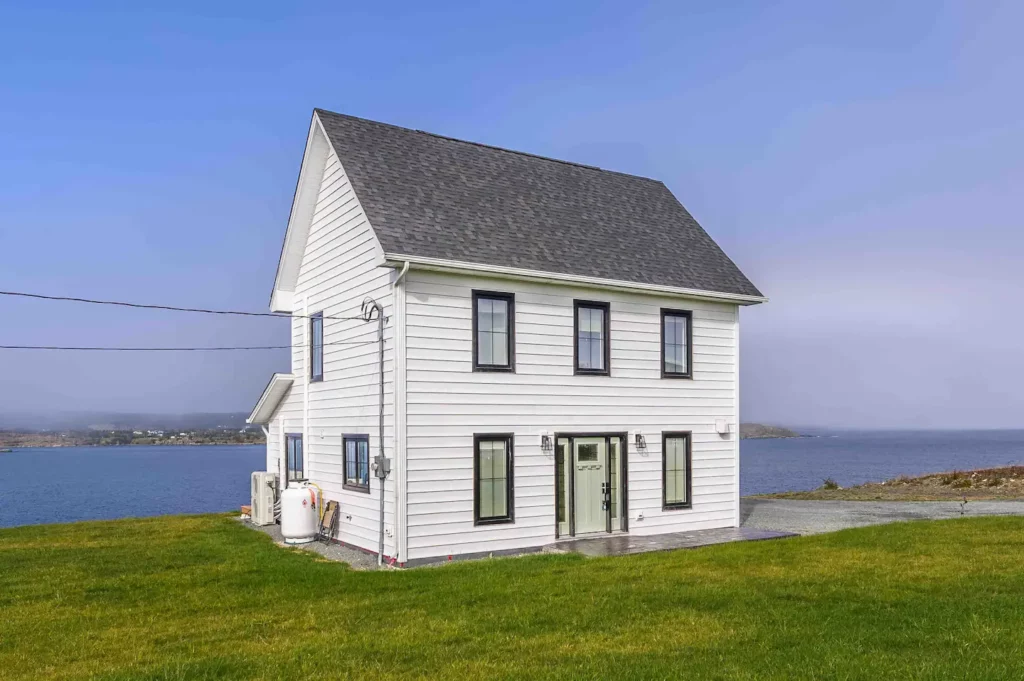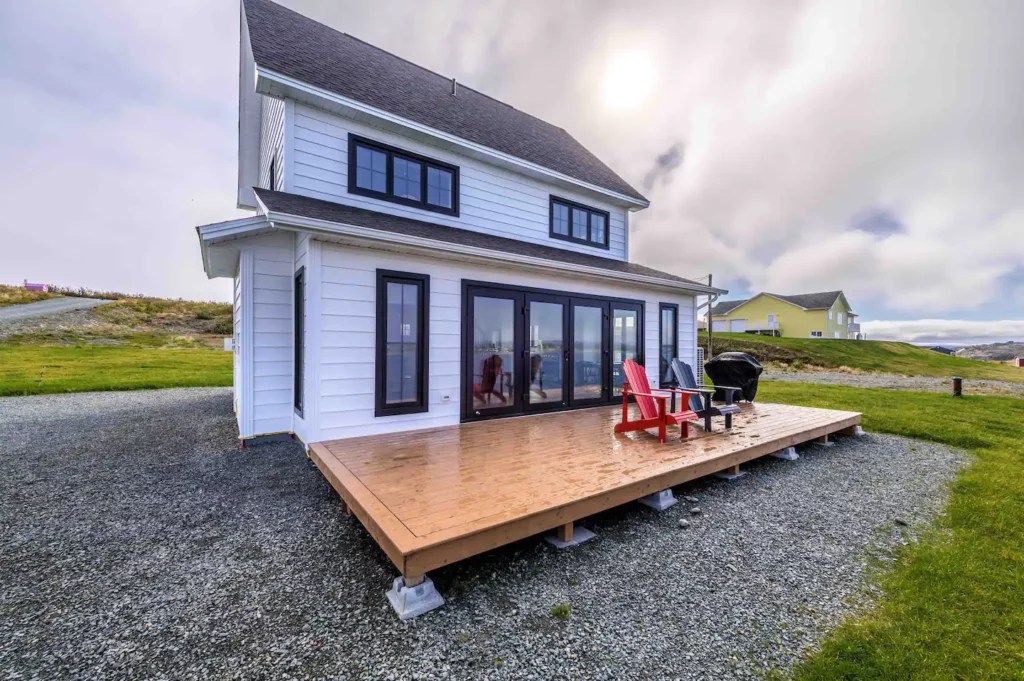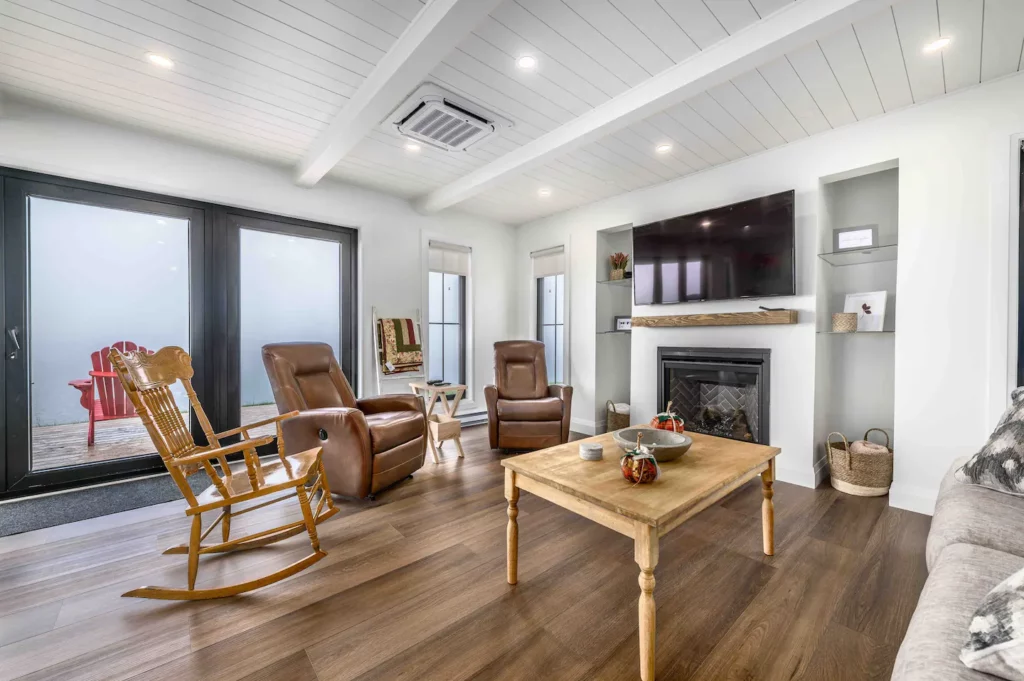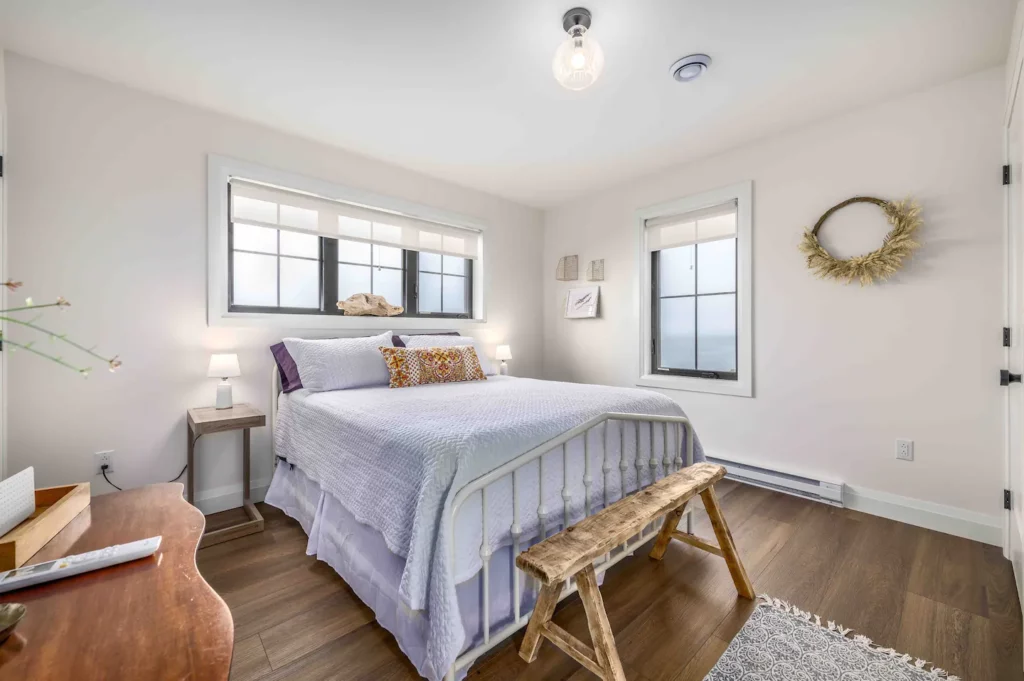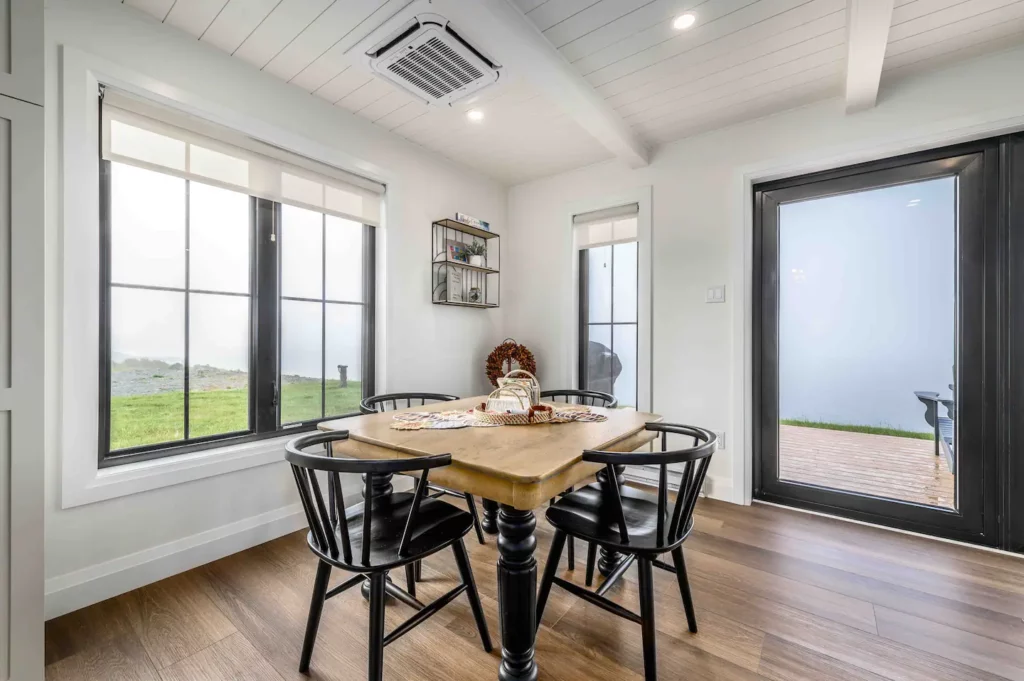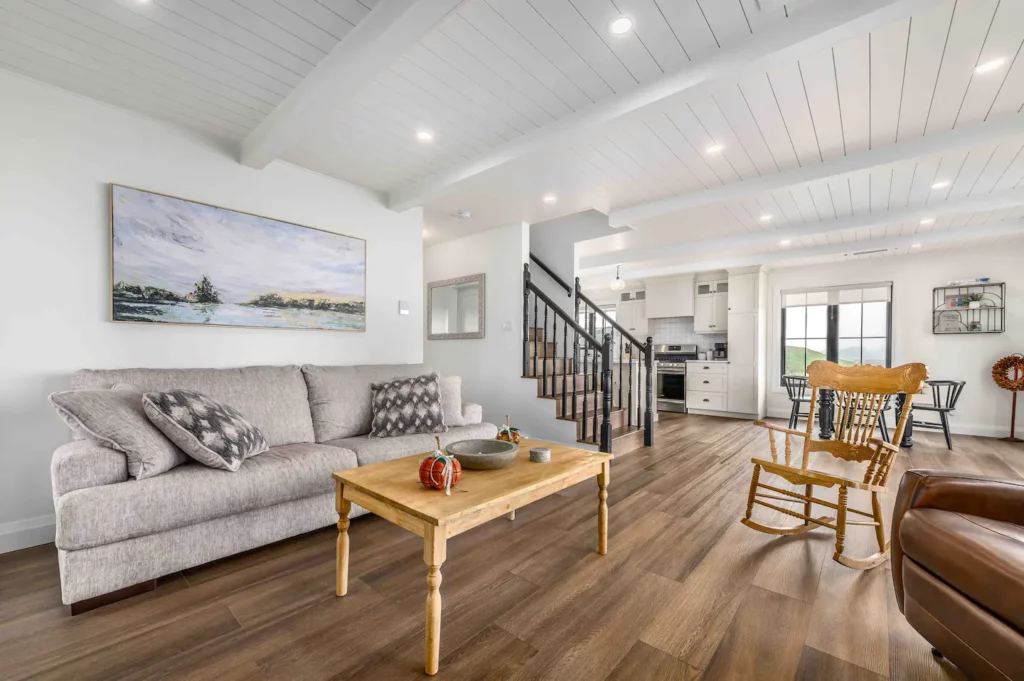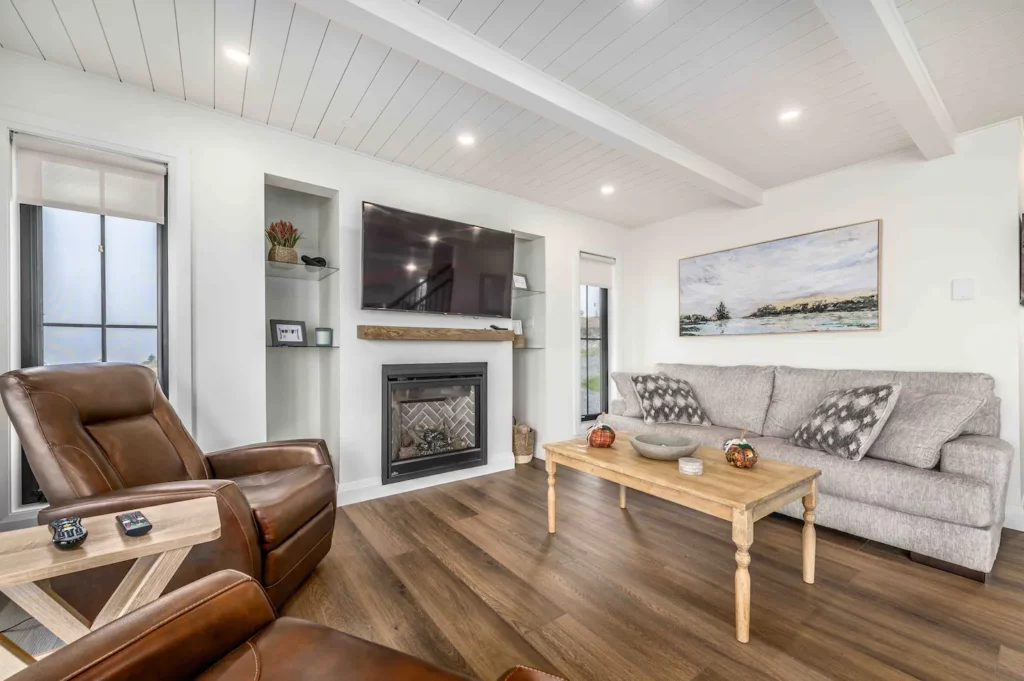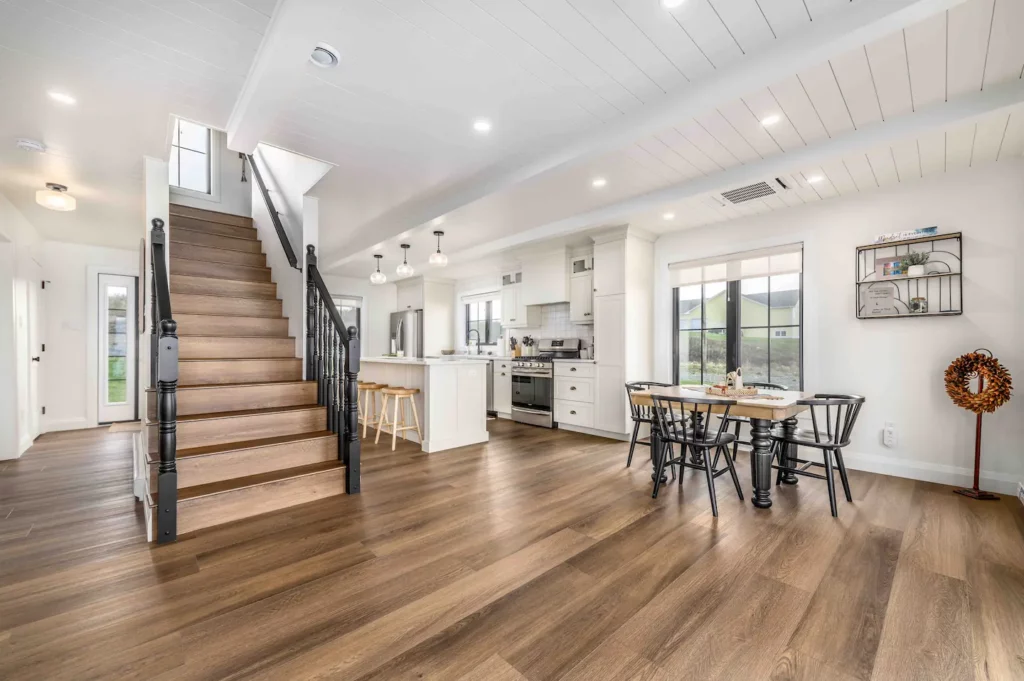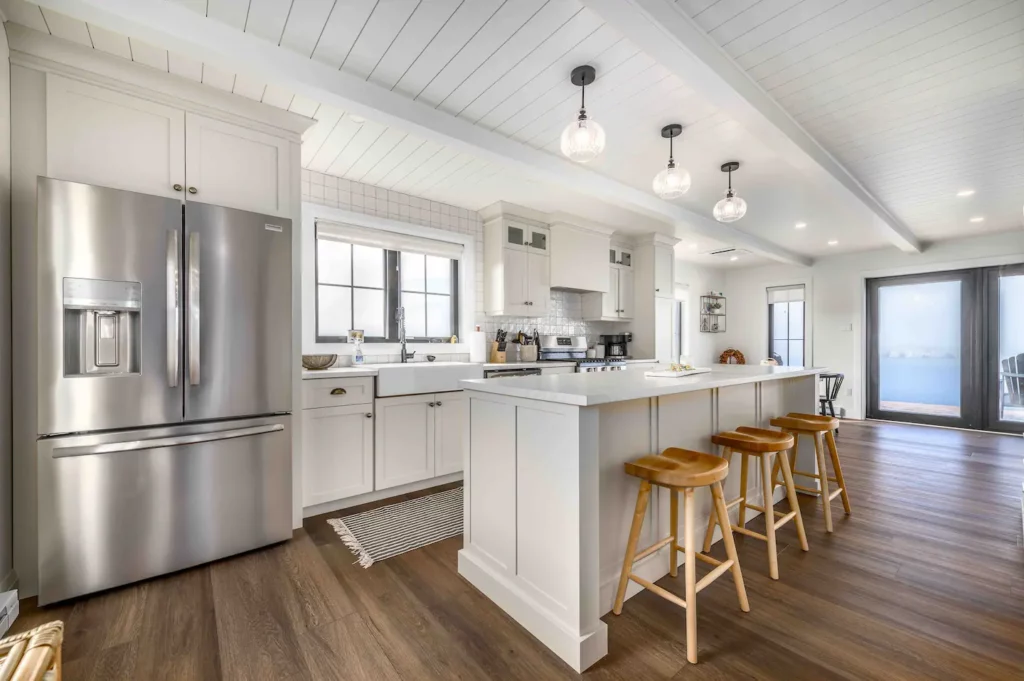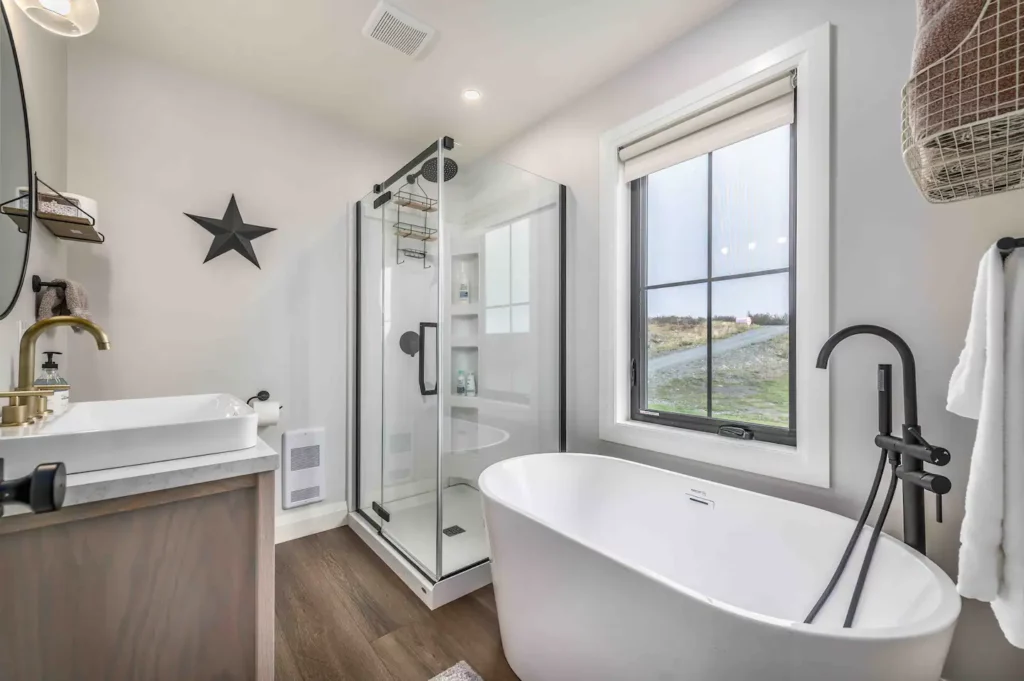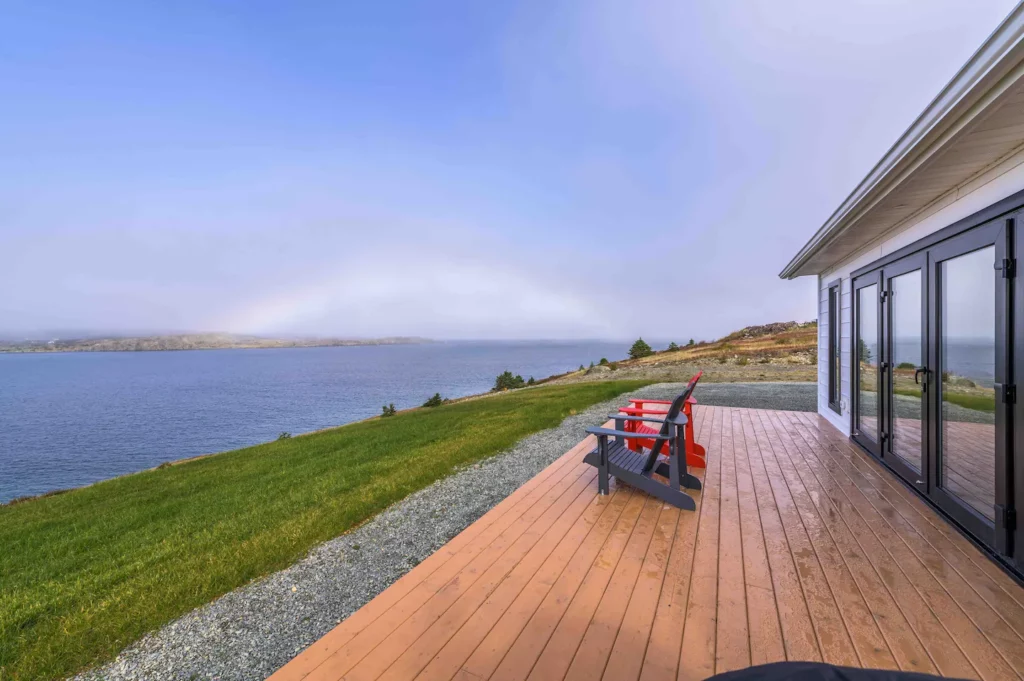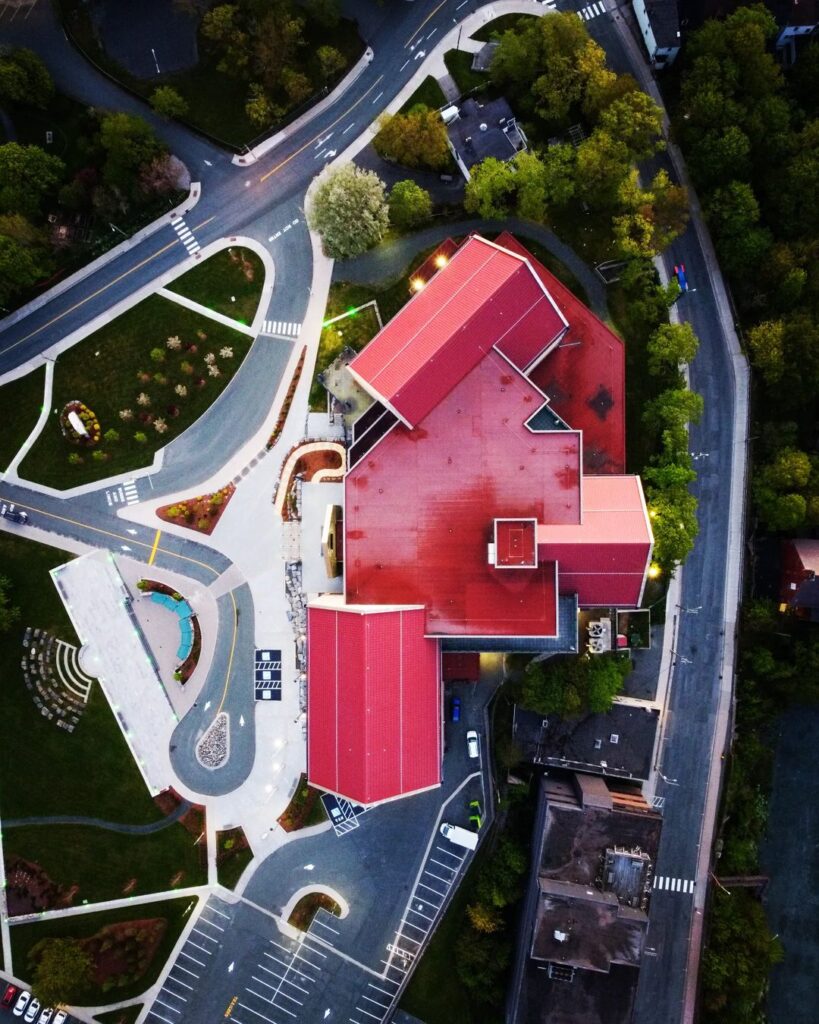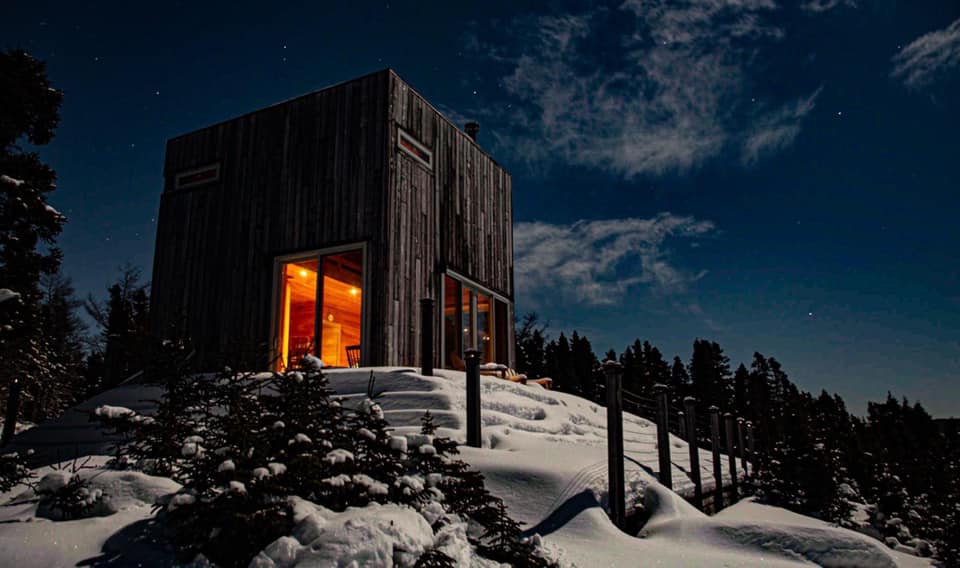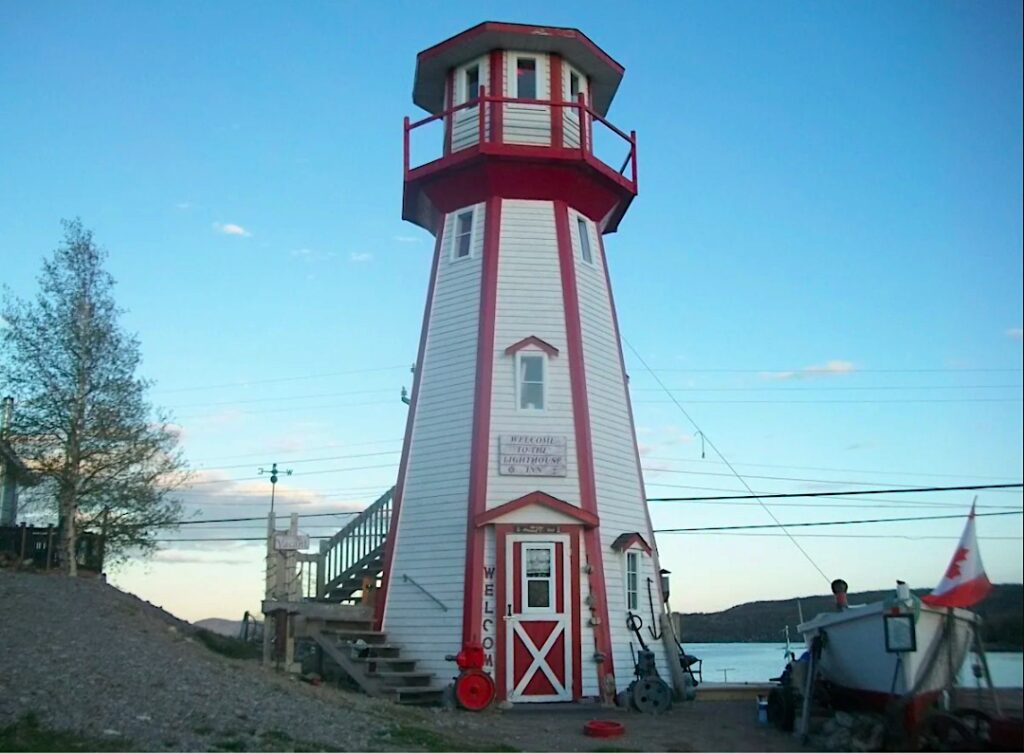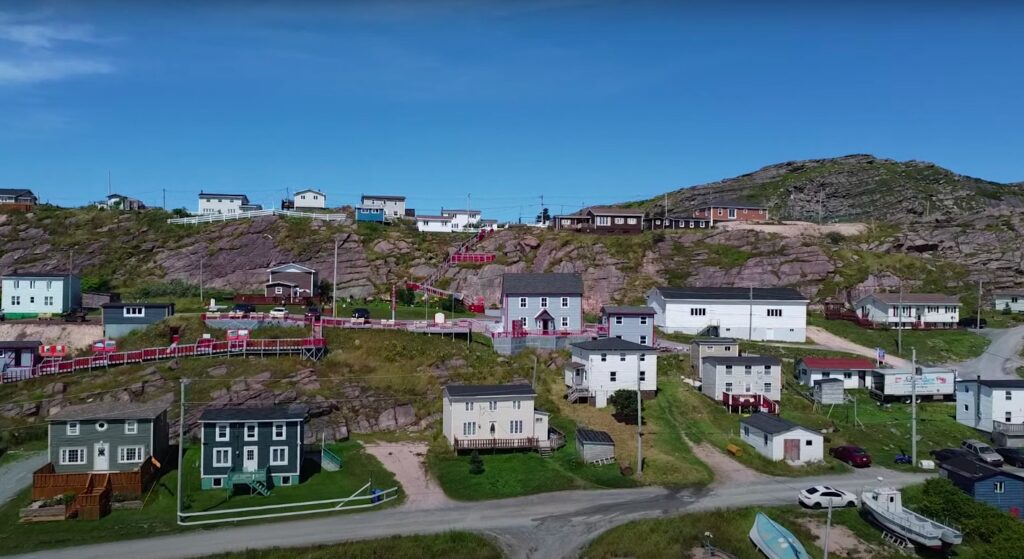The SeaForever vacation rental is a beautifully done traditional Newfoundland Saltbox house located in Port De Grave, Newfoundland and Labrador. The house has an ocean-chic vibe and offers beautiful unobstructed views of the sparkling ocean. We recommend this if you’re wanting a romantic getaway, or somewhere intimate to go and get that quintessential Newfoundland experience.
It comfortably accommodates six people with three bedrooms and 1.5 baths. Some of our family was just there for a babymoon and they had a fantastic time with the incredible views of the pack ice that was in the harbour mid March. This modern yet traditional Saltbox House is tastefully done and has all the creature comforts.
The house has a full kitchen, dining area, living room, bedrooms, and a fantastic front patio that is ideal for outdoor living. The property also has a private balcony, parking space, ocean access, and outdoor furniture. Complimentary coffee and teas are provided.

SeaForever is located in the historic fishing village Port De Grave and is an ideal vacation rental for those who want to experience the beauty of Newfoundland’s coastline. The house is spacious, comfortable, and has all the amenities needed for a relaxing vacation. The location is unbeatable, with easy access to the ocean and many nearby attractions.
BOOK SEAFOREVER HERE
Seaforever Port de Grave Photos
About Port de Grave
Port de Grave is a peninsula located on Conception Bay in Newfoundland and Labrador, Canada. The peninsula contains several communities, including Bareneed, Black Duck Pond, Otterbury, Ship Cove, Blow Me Down, Hibb’s Cove, Pick Eyes, and Hussey’s Cove, with a population of approximately 975 as of 2006.
The area has been used by Europeans since the 16th century, with the French being some of the first people to use the land to dry their catch as they fished off the nearby waters. They named one of the many harbours they used to dry their fish “Graves”. By the end of the 16th century, the area from Carbonear to Brigus, with Port de Grave in the middle, had become a major area in the English fishery.
